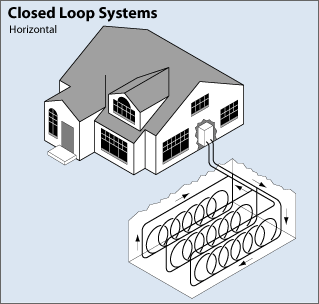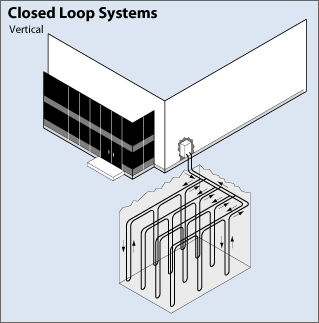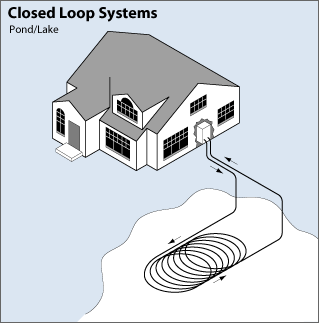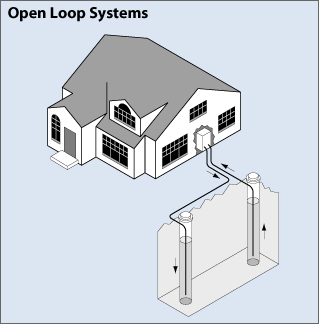DSO Electric Cooperative Inc. | 201 Dakota Drive | Solomon, KS 67480 | PO Box 286 | 1-800-376-3533
Geothermal heat pumps (GHPs) can make use of the stable temperatures in the upper 10 feet of the Earth to provide both heating and cooling to buildings. The surrounding soil, groundwater, or nearby surface water is used as a heat source in winter and a heat sink in summer.
GHP systems consist of three parts: the ground heat exchanger, the heat pump unit, and the air delivery system (piping and ductwork). In winter, when the ground is warmer than the air, the geothermal heat pump removes heat from the ground heat exchanger and pumps it into the indoor air delivery system. In summer, when the ground is cooler than the air, the process is reversed and the geothermal heat pump moves heat from the indoor air stream into the ground heat exchanger.
Geothermal heat pumps reduce both heating and cooling costs compared to air source heat pumps and air conditioners in both residential and commercial buildings. They have low operating and maintenance costs and, usually, the lowest life-cycle costs of the available heating and cooling options. Consumption of electricity is reduced 25% - 50% compared to traditional heating and cooling systems, allowing a payback of system installation costs in 0 - 10 years.
Called by a variety of names—earth-source heat pumps, GeoExchange systems, ground-coupled heat pumps, ground-source heat pumps, and water-source heat pumps—GHPs are known for their low environmental impact, quiet operation, and energy efficiency. Today, more than 500,000 geothermal heat pumps have been installed nationwide, including more than 500 in schools.





